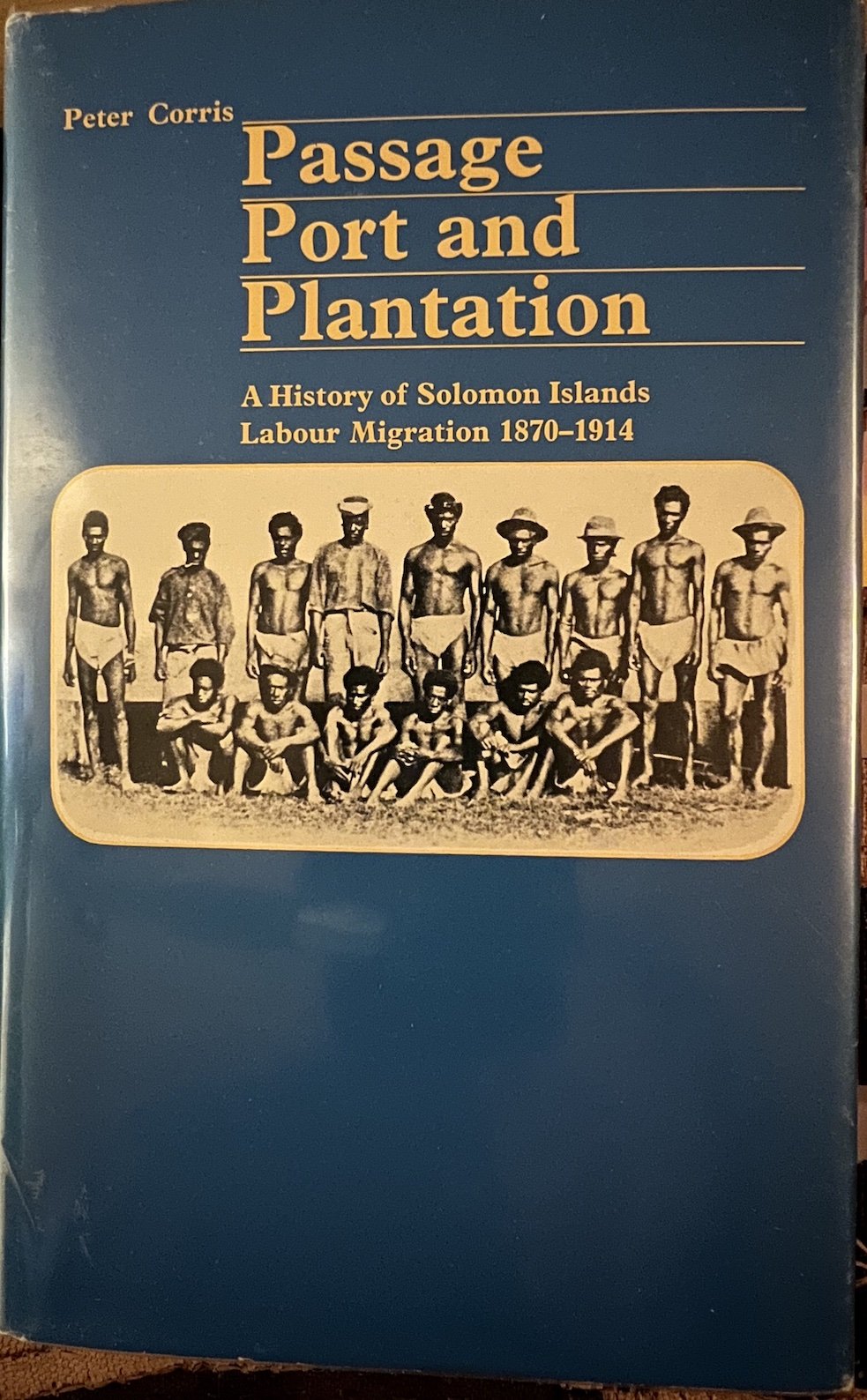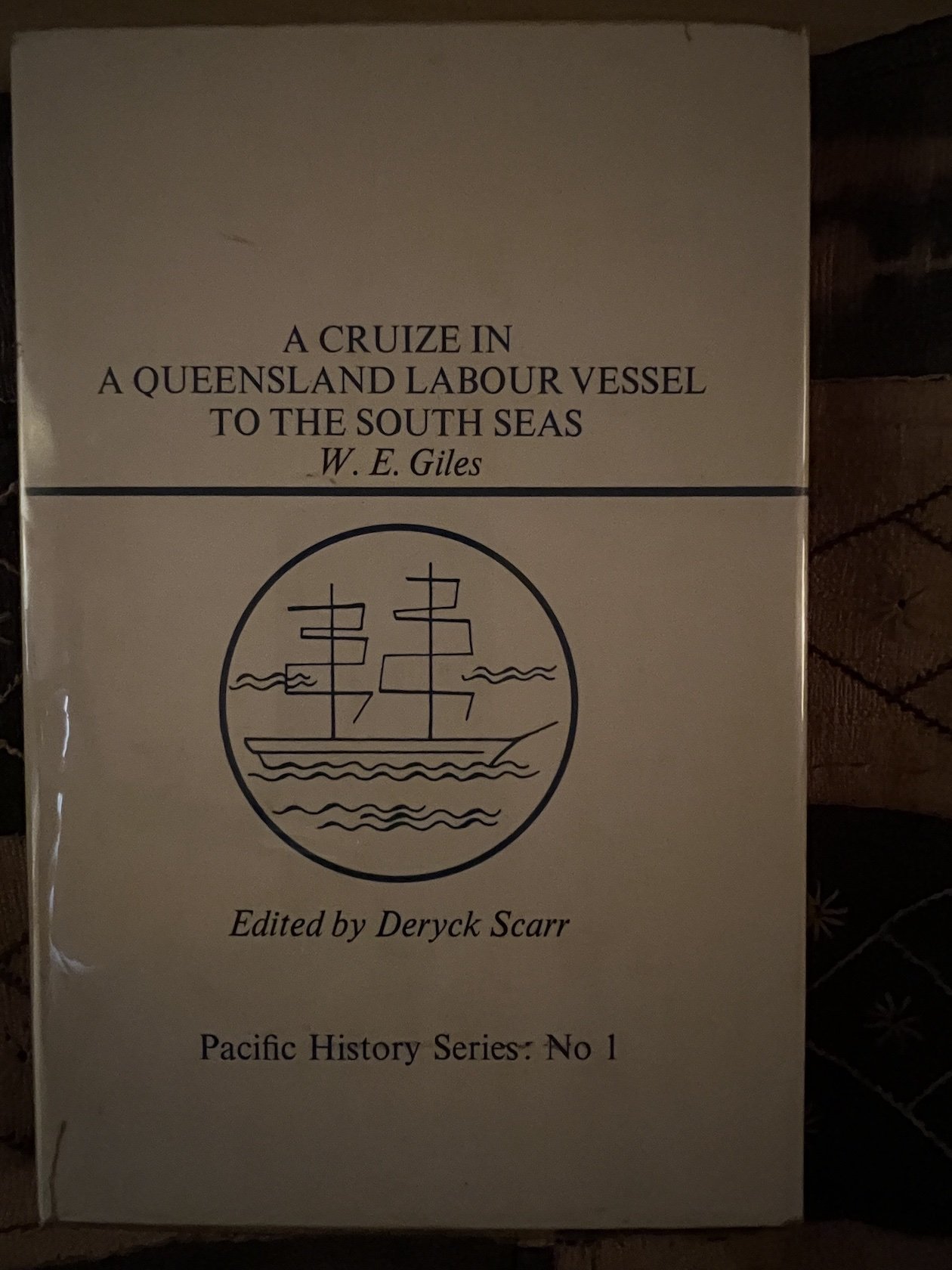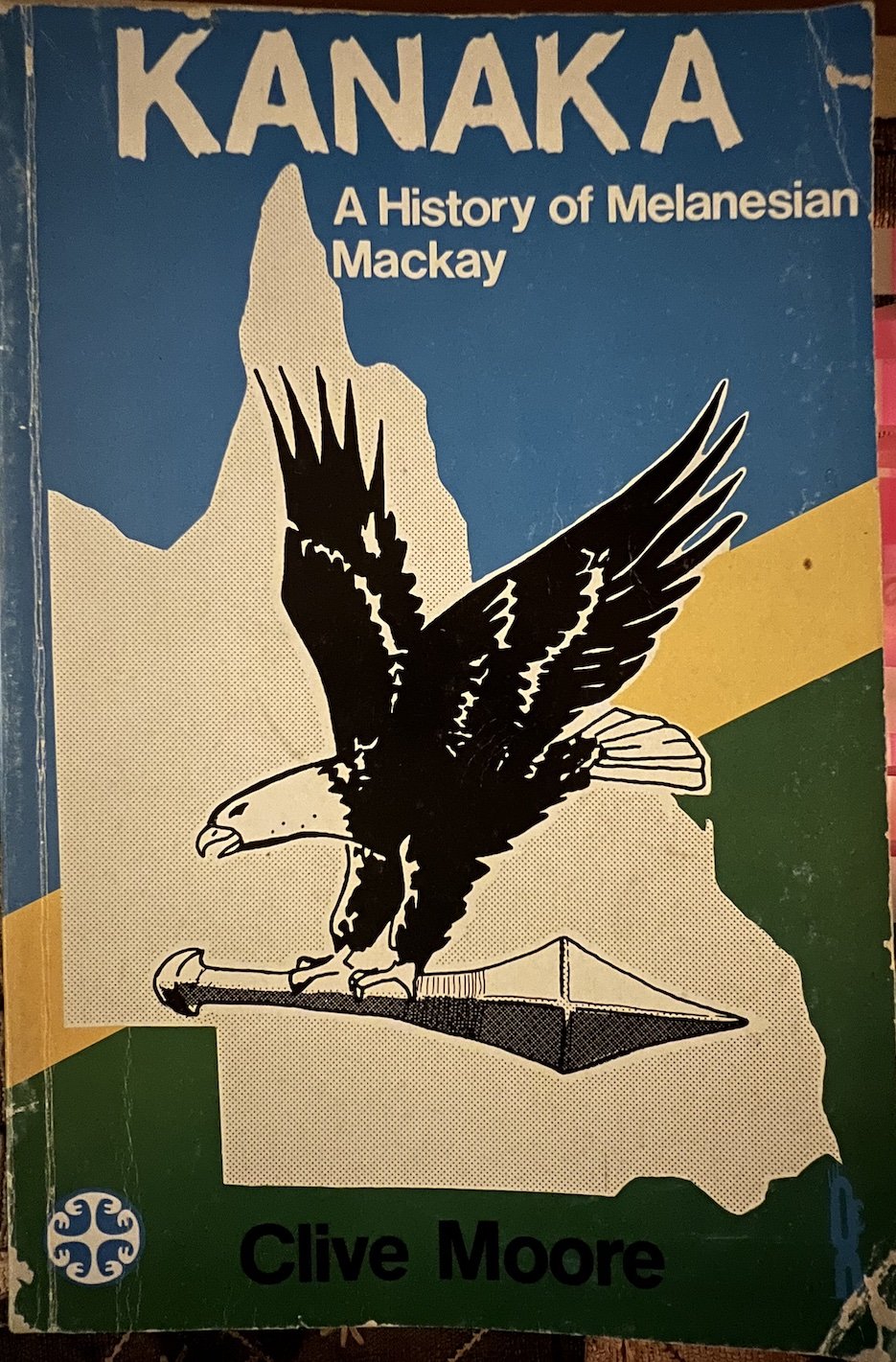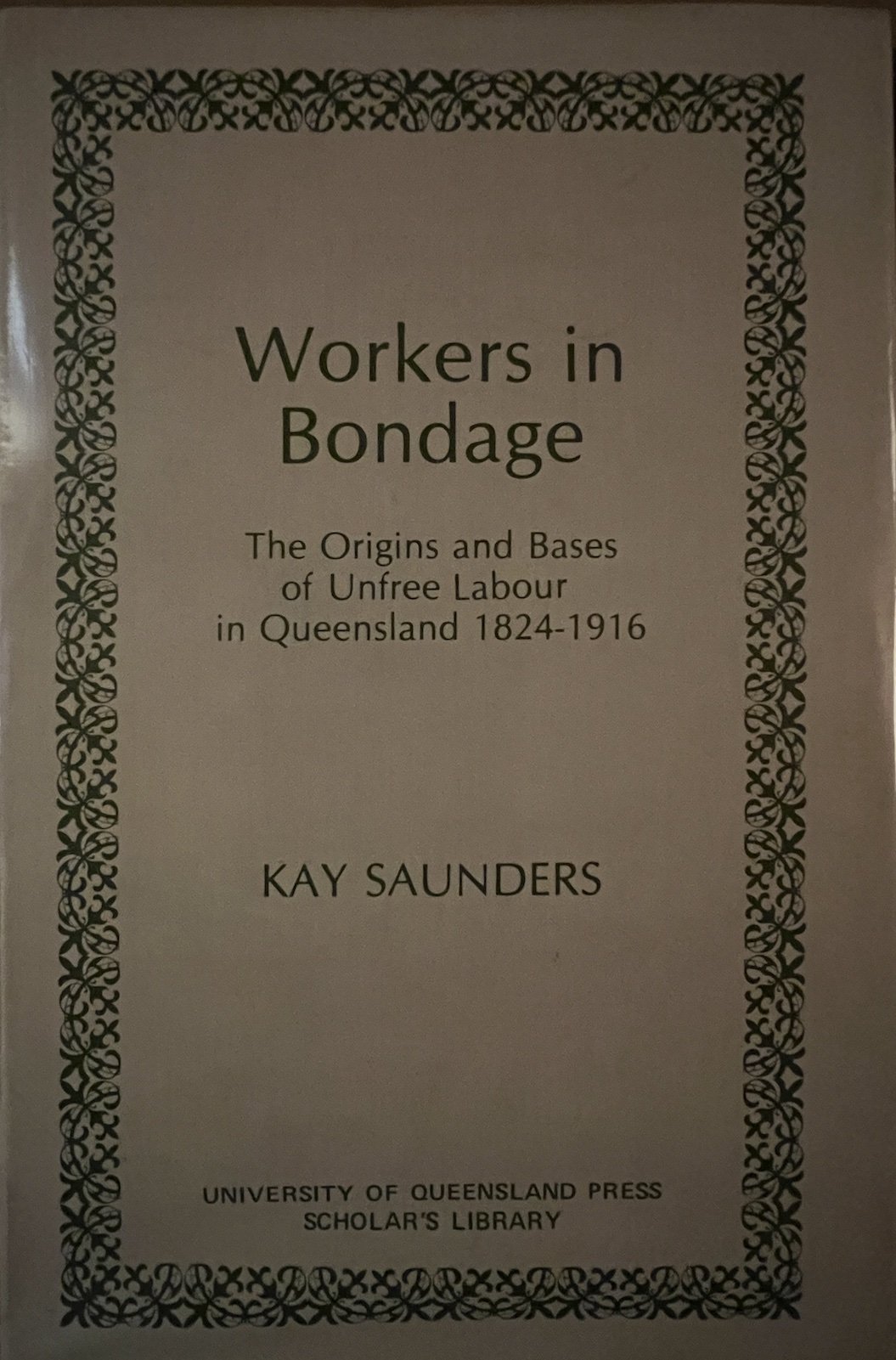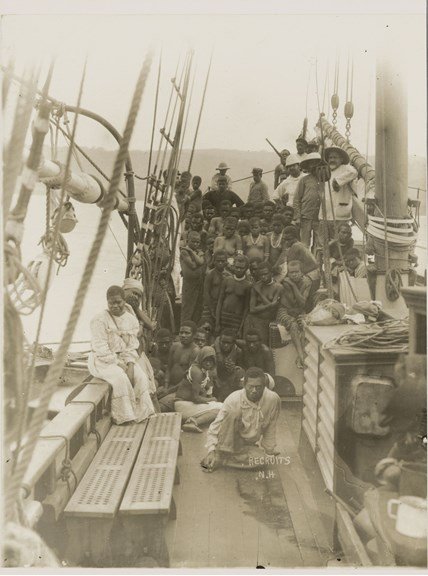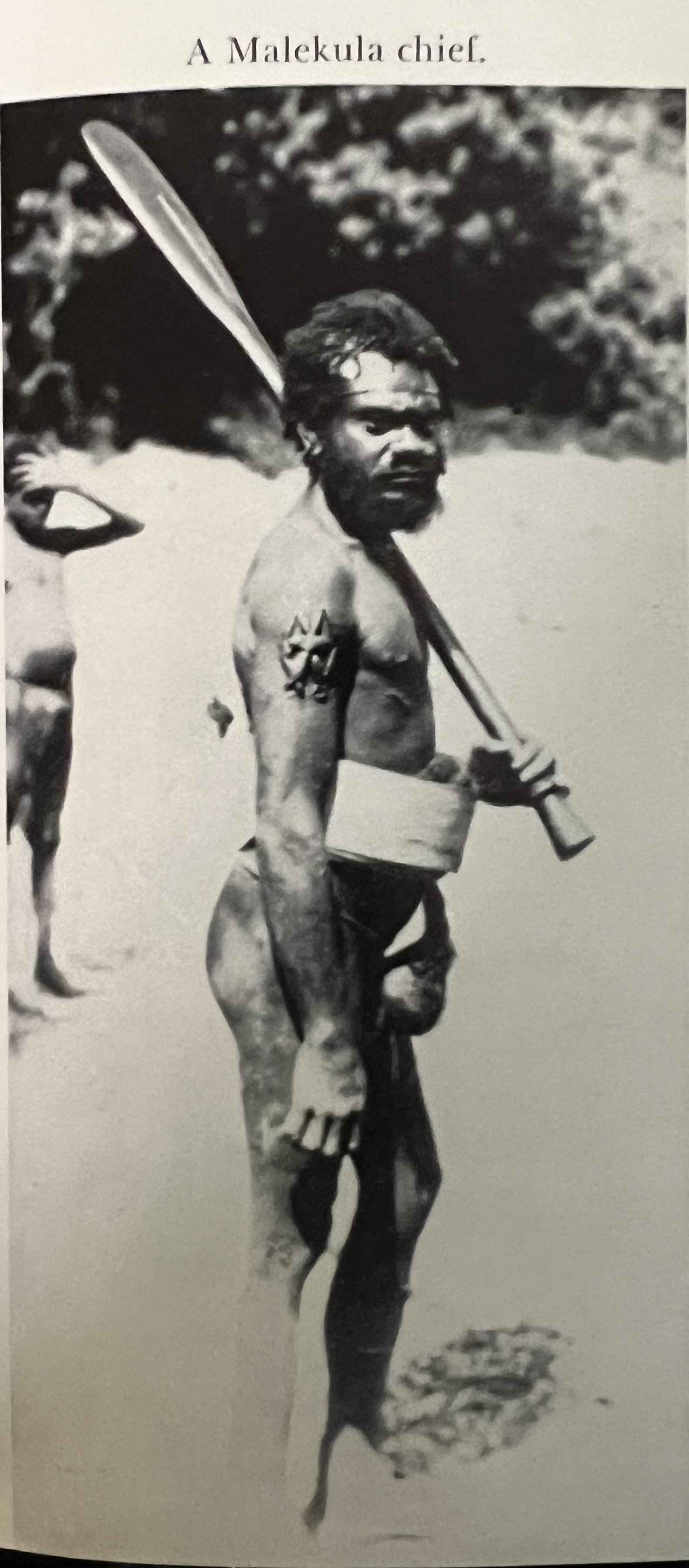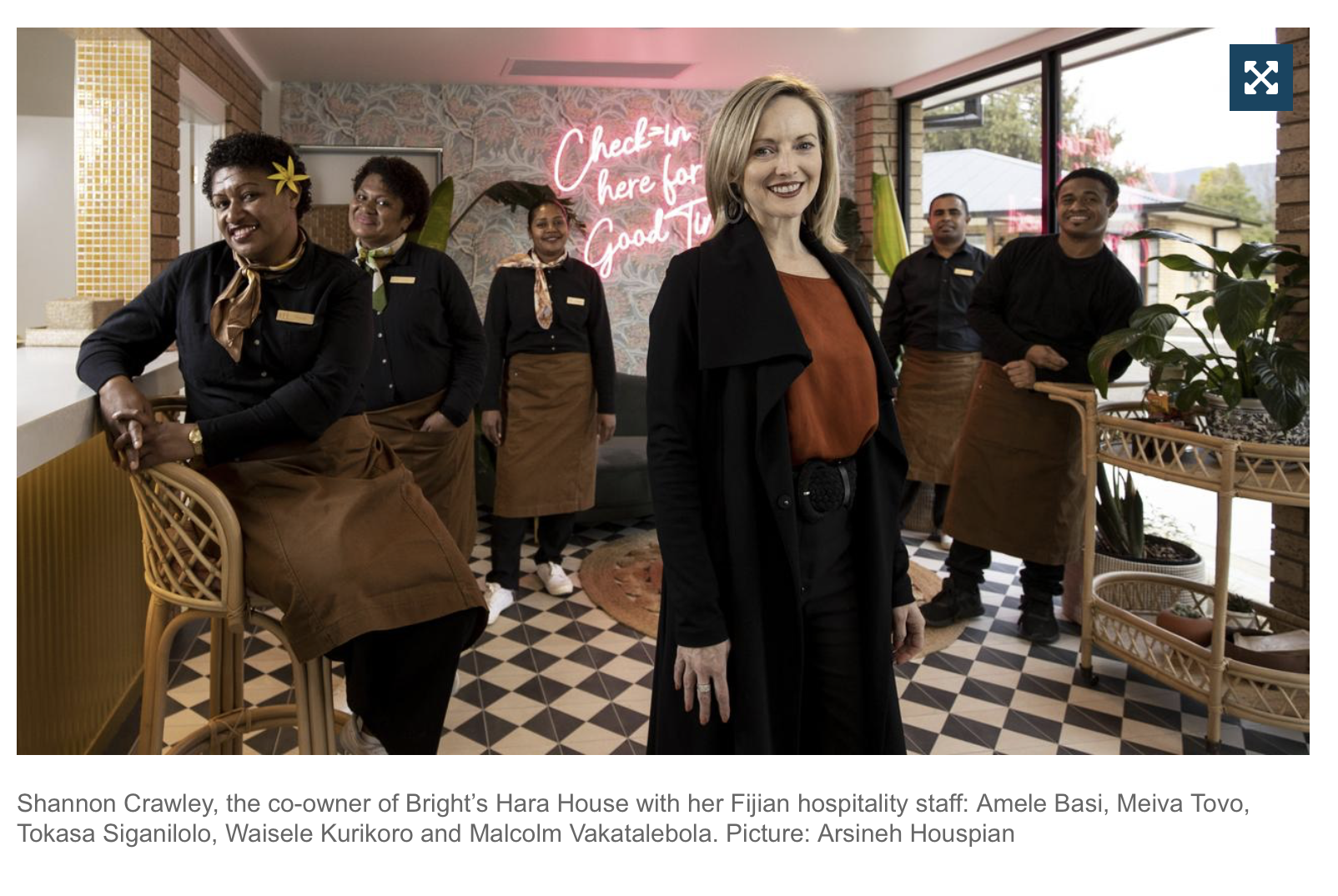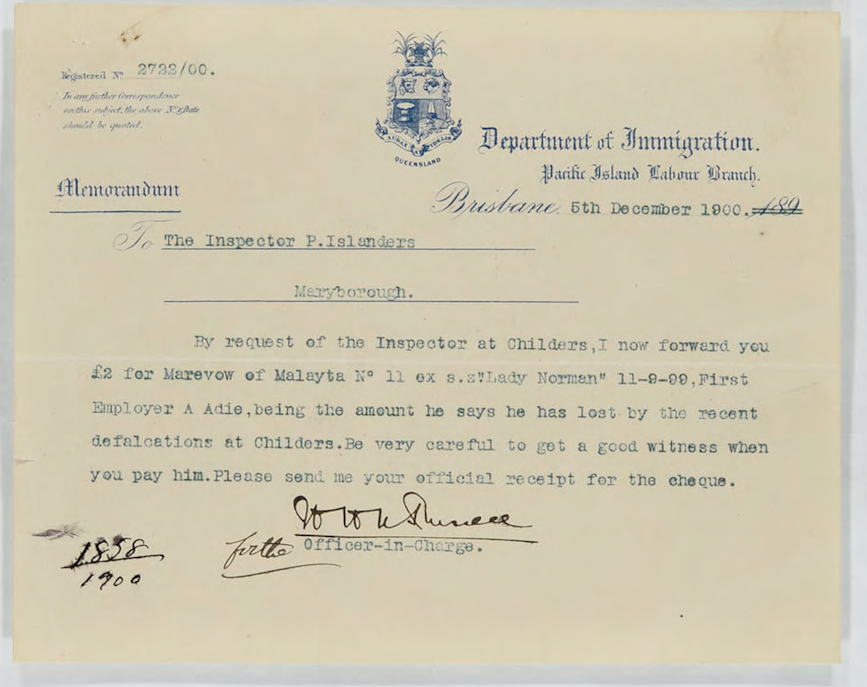Research Notes on Professor Davis's Claims for her South sea Islander Ancestors: Book Ref 1
Professor Davis’s Response Via the ABC
Part of the response from the ABC, to my complaint regarding the inaccuracies in the Australian Story on Professor Megan Davis and her family, concerned publications by a 2015 House of Representatives Standing Committee and the Australian Human Rights Commission in a 1992 report. In my opionion, theses reports have been selectively quoted by the ABC, presumably as advised by Professor Davis.
Part ofthe ABC response to myself was:
Dear Roger [Editor Dark Emu Exposed]
Thank you for your email about our story on Megan Davis.
… They did not use the word ‘slave’ but they did refer to the well documented history of often forced migration and racial discrimination suffered by the South Sea Islanders. Official reports back them up. This 2015 House of Representatives Standing Committee report says:
‘Although some South Sea Islanders came to Australia by choice, many were tricked by recruiters or kidnapped and brought here by force. Most worked in difficult conditions in the Queensland cane fields, and those who remained in Australia after Federation faced ongoing racial discrimination and harsh treatment throughout the 20th century.’ (Source: p8. 1.2)
A 1992 Human Rights Commission report into the disadvantage suffered by the Australian South Sea Islander community, commissioned by the Federal government, finds:
‘They were brought here, often against their will, from some eighty Pacific islands’ (p1, Introduction); and ‘The South Sea Islander history indicates that over the past century their general treatment was as close to slavery as the laws of the time would allow. White society used them as labourers when needed and discarded them when no longer needed’ (p13, 2.3.7)
We thank you for your feedback and your correction of the family's birth details and we hope you continue to watch our program.
Sincerely,
Rebecca Latham, Executive Producer Australian Story
My Response:
A) Yes it is true that neither Prof. Davis, nor sister Lucy, used the word ‘slave’ in this ABC program, but the Professor’s views on this matter are well known and have been reported elsewhere confirming her belief that some of her ancestors were ‘enslaved,’
‘Part of my family came to Australia via the practice of "blackbirding" – that is, the kidnapping and enslaving of South Pacific Islanders to work on plantations, especially in Queensland.’
- Professor Megan Davis, The Guardian, 16 May 2014
B) The ABC referred to Section 1.2 of the ``official report”, the 2015 House of Representatives Standing Committee report, (see Figure 1),
Figure 1 - Excerpt of the 2015 Parliamentary Committee Report relied upon by the ABC and/or Prof. Davis to claim (Item 1.2):
‘Although some South Sea Islanders came to Australia by choice, many were tricked by recruiters or kidnapped and brought here by force. Most worked in difficult conditions in the Queensland cane fields, and those who remained in Australia after Federation faced ongoing racial discrimination and harsh treatment throughout the 20th century.’ [1] [Ed. NOTE - Reference #1 in footnote as cited source]
Source: File.pdf Report
This statement in 1.2 is not correct where the implication is that only ‘some South Sea Islanders come to Australia by choice’, with ‘most being tricked by recruiters or kidnapped and brought here by force.’
The historical facts of the South Sea Islander trade colloquolly known as ‘black-birding’ was the other way round in reality: with most coming voluntarily and only some being tricked or kidnapped.
The reference cited in the footnote for this Section 1.2 in the 2015 Parliamentary Committee report is from a Queensland Government webpage - “Queensland Department of Aboriginal and Torres Strait Islander Partnerships, Australian South Sea Islanders, http://www.datsima.qld.gov.au/people-communities/australian-south-sea-islanders, viewed 3 March 2015.” (Figure 2)
Figure 2 -Screenshot of the Reference #1 cited in Figure 2 above. Source:Wayback Machine here
Readers will note that the 2015 Parliamentary Committee Report quote in Figure 2 is not a direct quotation.
Instead, the assertion made in Reference #1
‘While some ancestors of Australian South Sea Islanders may have left their homelands by choice, they were more often than not subjected to the same discrimination and harsh treatment as those that were deceived or taken by force.’
has been turned by the 2015 Parliamentary Committee in Item 1.2 of their report (see Figure 1 above) to read
1.2 - Although some South Sea Islanders came to Australia by choice, many were tricked by recruiters or kidnapped and brought here by force. Most worked in difficult conditions in the Queensland cane fields, and those who remained in Australia after Federation faced ongoing racial discrimination and harsh treatment throughout the 20th century. [1] (Ref #1 - see Figure 1 above).
This does not mean the same thing.
The Committee had decided to further weaponise the original quote to make it look like the South Sea Islander Indentured Labour program was predominately one based on trickery and kidnapping, and not a mainly a voluntary imported labour program that it really was [see below for statistics]
This is selective misquoting to slant the narrative in a certain political direction, namely that the SouthSea Islander labour trade was over whelmingly one of kidnapping and trickery.
In our opinion, it is not sufficiently professional for Professor Davis to rely only on this report for her understanding of what it like was really like for her South Sea Island grandparent and great-grandparents.
C) The second ‘official report’ relied upon up by the ABC (presumably advised by Professor Davis) to support their case case is a 1992 Human Rights Commission report into the disadvantage suffered by the Australian South Sea Islander community. This report was commissioned by the Federal government.
Ms Latham told us that this report found that,
‘They were brought here, often against their will, from some eighty Pacific islands’ (p1, Introduction); and ‘The South Sea Islander history indicates that over the past century their general treatment was as close to slavery as the laws of the time would allow. White society used them as labourers when needed and discarded them when no longer needed’ (p13, 2.3.7)
The two excerpts relied upon by the ABC and Prof. Davis from this 1992 Human Rights Commission Report are in Figure 3 (see part of first para.) and Figure 4 (see last para.) below.
Figure 3 - Excerpt from the 1992 Human Rights Commission Report on the Situation of South Sea Islanders. SourceTrove Online
Figure 4 - Excerpt from the 1992 Human Rights Commission Report on the Situation of South Sea Islanders. SourceTrove Online
But is this 1992 HRC Report really true?
In the Introduction section of page 1 of the HRC report it is stated that
‘They were brought here, often against their will, from some eighty Pacific islands’
However, in the main body of the report on page 75 historians Clive Moore and Kay Saunders describe that ‘kidnapping’ did occur in the early years of the trade (1860s to 1880s) it represented only about 5% of cases. This should not earn the descriptor ``often”.
Although outright kidnapping did certainly occur in the very early years of the trade (1860-70s), by 1887 the trade was well established and regulated and the islanders were wise enough not to seccumb to kidnappers (although some reports of kidnapping were still reported in the 1880s in the Solomons, with the last recorded one being 1894. Overall, it has been estimated that less than 5% of recruits were kidnapped, although 20-25% may have been indentured illegally in the sense that the paperwork, or mutual understanding, was incomplete (see “Definitions - Kidnapping” in Figure 5).
Figure 5 - Source p75
Figure 17 - Photograph of ‘cashed-up’ Kanaka workers returning to their island from Queensland. (Source: TBA)
Misinformation from our Government
In the 1992 Human Rights Commission Report quoted by the ABC and Prof. Davis in their response to us, [The Call for Recognition - A Report on the Situation of Australian South Sea Islanders HUMAN RIGHTS AND EQUAL OPPORTUNITY COMMISSION 15 December 1992] the HRC claimed that ‘remarkably little had been written’ about SSI’s. The HRC relied upon the sources described in Figure 6.
Figure 6 - Excerpt on references used in 1992 HRC Report.SourceThe Call for Recognition - A Report on the Situation of Australian South Sea Islanders HUMAN RIGHTS AND EQUAL OPPORTUNITY COMMISSION 15 December 1992]
This is not quite true. Although the HRC primarily relied principally upon one unpublished [at the time of the report] book by Patricia Mercer [which has now (1995) been published] there were a number of other academic books available at that time on the subject - Peter Corris, Passage Port and Plantation [Corris, as late as 1968, was able to contact 18 men who had actually ‘stepped into the boats, touched the pen (to sign the contract), and gone off to Queensland and Fiji’ as indentured labourers; W.E Giles, ‘A Cruize…’, Deryck Scarr, Fragments of Empire, the ‘first sensitive and rounded portrait of the labour trade’ whose overall assessment was clear: “As a business, however, the labour trade required the substantial consent of all concerned, which was, in a considerable measure, forthcoming from the islanders who were involved in it.”; Clive Moore, ‘Kanaka’; and Kay Saunder ,Workers in Bondage.
These books offer a more diverse understanding [and nuanced and balanced where appropriate] of the South Sea Islander trade than comes across in the 1992 HRC Report.
Definitions
Figure 31 - Source p74
Recruiting
Figure 7 - Source
The following photographs depict the South Sea Islander trade in Queensland. In the context of the times these people do not look `enslaved’.
A photograph of South Sea Islander ``Recruits” on their way to Queensland (ca1890?). Although some (many?) on board may not have fully understood the legal consequences of the Indentured Labour contracts that they signed (or had signed on their behalf by their village elders) they certainly don’t looked like examples of ``chattel slavery” as we now understand the Trans Atlantic slave trade to have been.
A photograph of a group of South Sea Islander labourers who, given their European dress, may predominately be returnees after signing on for a second Indentured Labour contract, like two of Professor Davis’s great-grandparents actually did. Hardly the action of a ``slave.”
South Sea Islander recruits - Europeanised in dress - either heading to Queensland [most likely on a second or later contract] or returning to the islands fully stocked with money and European goods
The Need For Historical Context
Many activists today want to portray the labour markets in colonial Queensland and NSW as some sort of racist, plantation system built on the back of black `slave’ labour. These activists reproduce photographs showing forlorn looking workers in cane-fields to support their case.
Yes life and work was tough in those days, but that was the way things were for all working people back then - blacks, whites, Chinese, Japanese and Islanders. Most of the activists complaining today always seem to look as if they have never done a hard day of manual work in their lives.
The historical reality is that Australia has always, and continues to be, a growing economy in need of labour. In pre-colonial times the majority of the daily grind was provided by the labour of Aboriginal women.
After 1788, the labour was predominately supplied white convicts.
Figure 8 - Convict Tramway, Van Diemen’s Land (Wikipedia)
From say, the 1850s onwards, it was predominately ‘free-immigrant labour’ - white shepherds, settlers, miners and in more remote regions Aborigines, as well as their horses. By the 1880s they were joined by white factory workers and a trickle of Kanaka labour recruits from the South Sea Islands.
To put the relative populations into context, the population of colonial Australia in 1900 was some 3.74million (Figure 9), after which some 162,000 convicts had arrived and some 62,000 individual Kanaka contracts issued (to approximately 50,000 Kanaka individuals as many signed up two or three times). Thus, the influence of 50,000 South Sea Islanders was hardly influential in the bigger demographic picture.
Figure 9 - The historical convict population (ca163,000) and the South sea Islander population (ca50,000) are insignificant on a national basis to the total colonial population on the eve of Federation in 1900 (ca3.74million). Source
Was the Indentured Labour Trade Based on Kidnapping and Slavery?
If, as the Davis family believe , the South Sea Islander labour trade was so bad, and based on kidnapping and slavery, why did it last some forty years and why did the Davis family ancestors sign-up and return on second-contracts? And more importantly, why did they seek exemption certificates that entitled them to stay in Australia permanently?
Some of reasons are related to the fact that life in the islands was not always idyllic.
There was constant warfare in many islands, not only between tribes but also within tribes. Many of the senior men were ruthless fighters, which is easy to image when looking at some of Prof. Megan Davis’s possible ancestors (Figures 10 & 11).
Figure 10 - Malekula (Vanuatu) warrior. Prof Davis may have had an ancestor such as this. Source: E. Docker The Blackbirders, 1970, p52op
Figure 11 - Malekula (Vanuatu) warrior. Prof Davis would have had an ancestor such as this. Source: E. Docker The Blackbirders, 1970, p52op
Furthermore, in some South Sea Islands such as the Solomons, head-hunting was rife, as written about by Peter Corris (see Figures 12A&B).
Figures 12A & B - Extract from Peter Corris’s, Passage, Port and Plantation, p29-30. [Note: western islands of the Solomons]
Corris concluded that indigenous slave raiding and head-hunting reduced the number of labour recruits seeking to escape Solomon Island society by providing enough ‘enjoyment’ for the men to keep them at home.
Many of us would wonder however, why 17,756 Solomon Islanders still decided instead to indenture [‘enslave’] themselves to Queensland sugar plantations? This group represented 28% of the total of recruits to Queensland - the second highest share after Vanuatu (53%).
Was it because that a life consisting of two choices - hunting-heads or having your own head hunted - was not that attractive compared to the access to modernity that a labour contract in Queensland offered?
Modern Day Indentured Labour from the South Sea Islands
Before commentators such as Professor Davis and her sister get too supercilious, they should spending some time thinking about the Pacific Islander Labour schemes of our society today, for our PALM (Pacific Australia Labour Mobility) Visa Scheme.
When the activists take to the high-moral ground and blame a ‘racist’ colonial Australia for the South Sea Island labour trade, it is instructional to point out that the trade still exists. Pacific Islanders `sign on and indenture’ themselves for a set period, under set working conditions with a set employer. Over the past 150 years a modern, honest and moral country such as Australia keeps progressing, at the best of our ability, to regulate the trade to enforce rights and obligations on all participants.
See Figures 13 & 14 for a modern day example of the South Sea Islander indentured labour trade going well.
Figure 13 -Source:The Australian 18 August 202133
Figure 14 -Source:The Australian 18 August 2023
And an example where the ABC’s 4Corners program are telling us that there are problems with the modern day trade.
Figure 15 - In 2015 the ABC was telling us that there is widespread “Labour exploitation, slave-like conditions found on farms supplying biggest supermarkets” built around 417 Visa workers (modern form of indentured labour), but then they would say that wouldn’t they?Source: Labour exploitation, slave-like conditions found on farms supplying biggest supermarkets
[Ed. Note : The same ABC that: ABC admits it may have underpaid 2,500 casual staff for six years].
Further Further Reading
Below is a good account of the how, why and what happened to, a couple of young Solomon Island '“boys” Tobebe and Afio, who were kidnapped for the Queensland labour trade. The activist Left will play up the first part of their story, but will never mention the final outcome.
Readers can make up their own morality play on what happened to them, but at the end of the day it’s history and the boys dealt with life as best as they could, on their own terms. We today should not feel guilty at all, only interested and willing to learn.
Figure 16A,B & C - Source: Corris p26
Source: Corris p27
Source: Corris p29
Odds and Sods - Interesting items come across during our research
Figure 17
Letters/ memos from the Queensland Archives showing that the authorities seemed to be doing their best, with limited resources, to ensure the Kanakas were treated fairly
Figure 18 series
What Is Defalcation?
The term defalcation primarily refers to an act committed by professionals who are in charge of handling money or other resources. This typically entails the theft, misuse, or misappropriation of money or funds held by an official trustee, or other senior-level fiduciary. As such, it's considered a form of embezzlement, either through the misallocation of funds, or the failure to account for received funds.
The following is a document that shows that the turn of century (1902), our society’s attitude was changing with regard to labour in the tropics and the rights of workers. Up until then it was generally considered that white labourers could not do manual labour in the tropics and labouring wages were to be kept as low as possible. However, the working man started to agitate for better pay and conditions and wanted to ensure wages were held high. To achieve this organised labour had to push back against commercial interests and one of the first ‘casualties’ was low-wage, indentured labour. Hence, the termination of the SSI labour-trade and the eventual expulsion of most of the South Sea Islanders.
Figure 19 - Letter from a grower D. Pratt illustrating the social change underway to move to white labour even when new SSI recruits were still available.
Mackay, 27th Feb 1902
H Hornbrood(?) Esq. (?), (?)
“I have indented 2 recruits per “Clansman” but I have now decided to try to grow cane with white labour.
Will you kindly oblige me by endeavouring to have the boys transferred to somebody who would like to have them.
Yours faithfully, D Pratt
The removal of new SSI recruits paved the way for the employment of ‘white’ cane cutters on higher wages and ultimately the emergence of the cost cutting mechanization of the sugar industry. Today Australia is one of the most efficient sugar producers in the world, a perfect example of progressive social policies leading to successful economic outcomes, even if that required the enactment of the White Australia Policy for some 60 years to effect this transition.
The short video below illustrates that the life of the Kanaka cane cutter and the early white cane cutters might not have been all that different.
Figure 20 - This ca1890 photograph is the favourite used by the activist Left to elicit sympathy for the ‘Kanaka cane-worker as oppressed slave’ narrative, despite their being well dressed and in Queensland voluntarily under contract.Source: Kanakas photographed on a sugarcane plantation with the overseer at the back of the group. ca. 1890. Cairns, Queensland, Australia. Collection reference: APO-25 Photograph Album of Cairns Views.
Figure 21 - These types of photographs from 1915 are not at all well known, even though they show cane-workers only some 25 years after those in Figure 46 adjacent. Is it because these cane workers are white?Source: The Robley family - “Between 1912 and 1915 , with his brother, Percy Charles, Sydney James worked as a cane cutter in Queensland”








